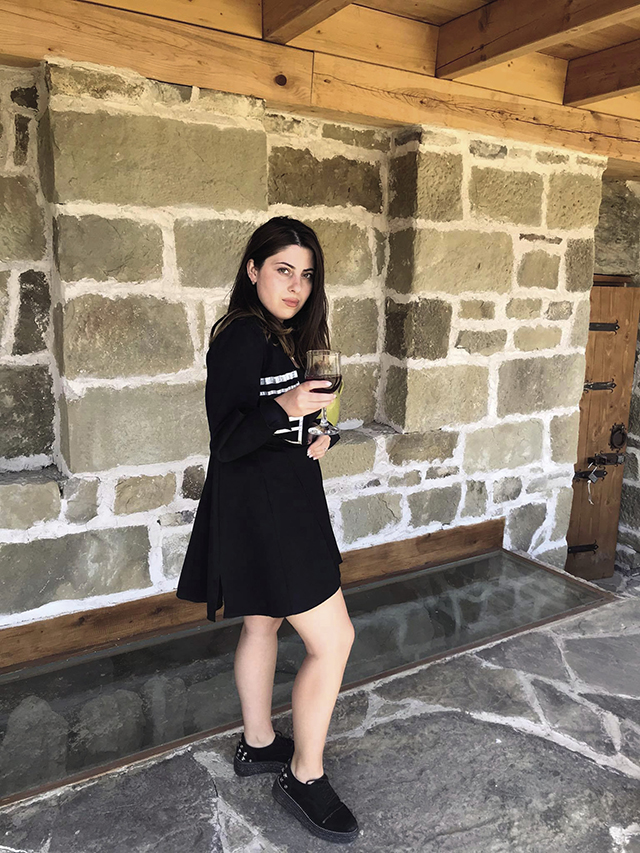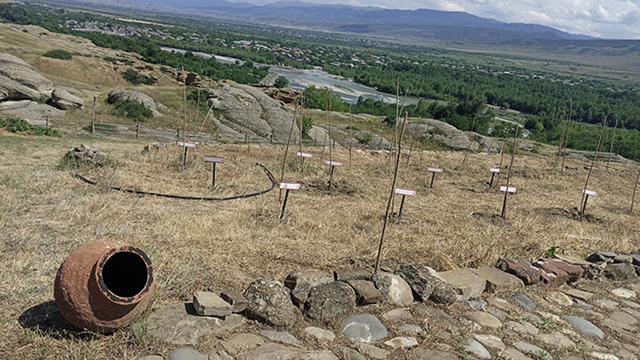Sofia Tsertsvadze is an English translator by profession, and her career path so far has led her from university to the Stalin House Museum in Gori, where she was a guide, to the Uplistsikhe Museum-Reserve, where she now works as the English-speaking manager of a newly built Wine Cellar on the territory. GEORGIA TODAY went to meet her to find out more.
The Cellar isn’t new, but we are only hearing about it now. Why is that?
The restoration of the historic cellar set at the rear of the cave settlement took a year to complete. It opened in November 2019, but due to the pandemic, the reception of tourists was stopped in March 2020, meaning the public never had the chance to get to know us until now.

Tell us about the Wine Cellar and what it offers visitors.
The historic cellar offers visitors a tasting with a wine tour (ask at the ticket office near the main entrance), both in the cellar and on the terrace, where we host them and offer them the chance to participate in traditional Georgian cooking methods, such as baking bread, making churchkhela (the Georgian Snickers), grilling meat, and so on.
The aim of the project is to popularize the Uplistsikhe Museum-Reserve, to promote the development of wine tourism in the region, and to create a collection of historical wine varieties from Shida Kartli. More specifically, the project aim is to cultivate a vineyard of wine varieties which were found near the cave city, with maximum consideration of ethnographic-historical elements.
Tell us about the wine.
On our terraces in Uplistsikhe, we planted surviving ancient wine varieties found near the cave city, and the best wine varieties of Shida Kartli: Tavkveri, Chinuri, and Goruli Mtsvane.
What’s more, previously unknown wine varieties were discovered on the territory of the Uplistsikhe Muzeum-Reserve, their existence proving that there has been vine cultivation here since ancient times. They are on the verge of extinction today and only this unit survives, and the vines need to be maintained and multiplied.

The Uplistsikhe Cellar is a good example of public-private partnership. Tell us about it.
Uplistsikhe is visited annually by more than 300,000 tourists from many countries around the world, and the inclusion of a Georgian wine component in the guided tour will enrich the tour and create another hub for wine popularization. In this regard, the Uplistikhe Cellar makes a very interesting and promising model for partnership between the state and business. The idea was implemented in cooperation with our company and the National Agency for Cultural Heritage Preservation, which on the one hand gave our business the opportunity to develop new areas of activity in a favorable environment, and on the other hand, with the support of the business sector, a most important cultural heritage site has been given new life. The restored cellar of Uplistsikhe is a visible example of public-private partnership. It would be good if the state better supported the development of similar projects; to better support those Georgian micro and small businesses improving tourism, gastronomy and other services both locally and internationally, or developing viticulture and winemaking. Visitor awareness is on the up about Georgian winemaking traditions, and this will only grow with new active locations such as this in less tourist-active areas in the regions.
Interview by Katie Ruth Davies













